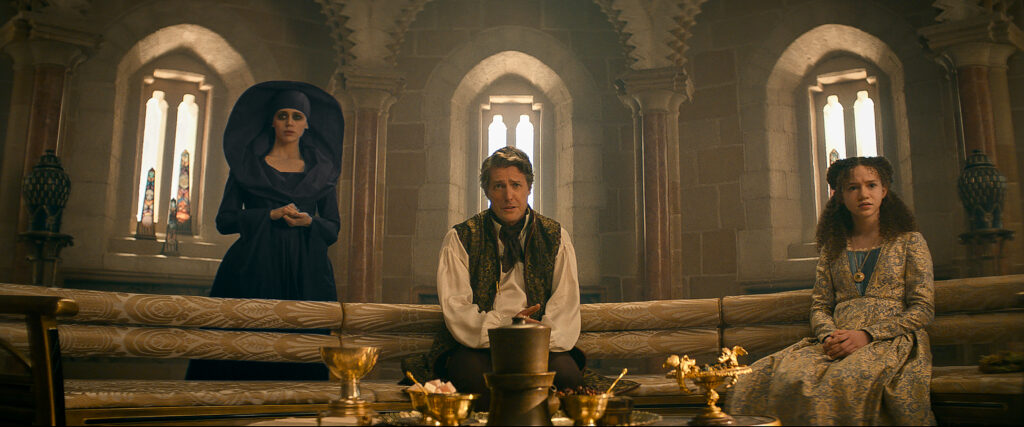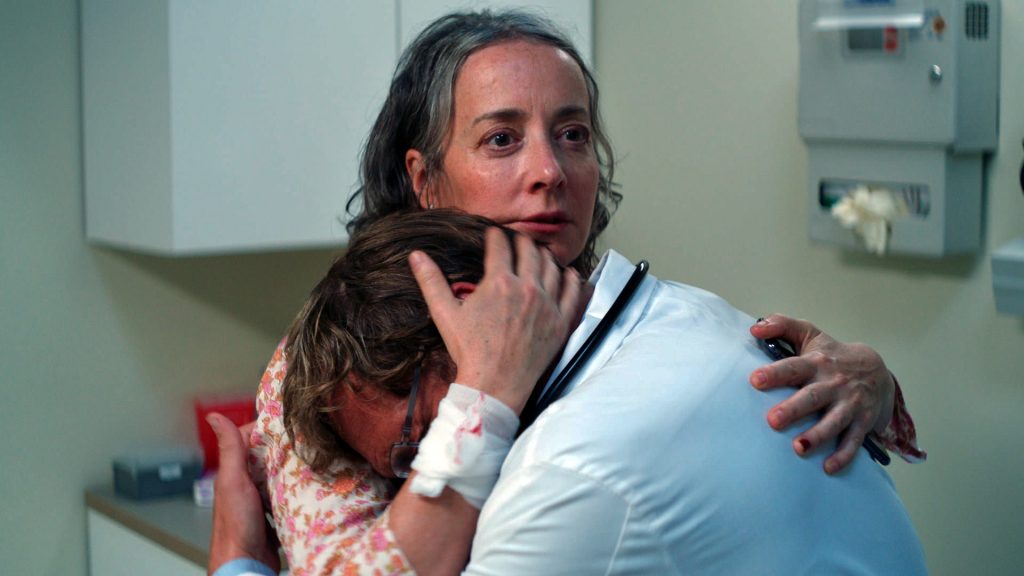May 17, 2023
by Carla Hay

Directed by Louis Leterrier
Culture Representation: Taking place in the United States, Brazil, the United Kingdom, Italy, Portugal, and Antarctica, the action flick “Fast X” features a racially diverse cast of characters (black, white, Latino and Asian) representing the middle-class and wealthy in law enforcement and the criminal underground.
Culture Clash: A daredevil team tries to save the world from a group of criminals led by a sadistic killer who’s avenging the death of his father.
Culture Audience: Besides appealing to fans of the “Fast and the Furious” movie franchise, “Fast X” (the 10th movie in the series) will appeal primarily to people who want to a predictable action flick with high-budget stunts and low-quality screenwriting.

“Fast X” is the cinematic equivalent of a multi-car crash pileup. It’s a huge downgrade for the franchise, which is a bloated mishmash of Oscar-winning stars and less-talented cast members saying a lot of awful dialogue while dodging guns and explosions. It’s bad enough that this franchise expects people to believe that the “heroes” don’t get wounded or killed in the way they should in these far-fetched action scenes. Now, this franchise expects viewers to believe that some of these characters can come back from the dead.
Directed by Louis Leterrier, “Fast X” (the 10th film in the “Fast and the Furious” franchise) has given up on having coherent plots and interesting characters. Everyone is just a caricature at this point. Justin Lin (who was the original director of “Fast X” but he quit due to behind-the-scenes turmoil) and Dan Mazeau wrote the atrocious screenplay for “Fast X,” which ends with a scene that will either have viewers cheering or rolling their eyes at the ludicrous “resurrection” that viewers are expected to believe.
“Fast X” has a less complicated plot than 2021’s “F9: The Fast Saga” (the ninth movie in the “Fast” series), but that just means the plot’s inanity is even more obvious. In a nutshell: “Fast X” is about the daredevil “heroes” of the franchise being framed as terrorists by a wisecracking villain named Dante (played by Jason Momoa), who likes to spead out his arms a lot, as if he’s a criminal messiah. Dante is the son of Brazilian drug lord Hernan Reyes (played by Joaquim de Almeida), who was killed during his defeat by the “Fast” heroes in 2011’s “Fast Five.” Dante acts like an unhinged and untalented stand-up comedian when he commits his mayhem, such as when he threatens to blow up the Vatican in Rome, and he smirks that he’s “going to hell,” just for making this threat.
The “Fast” hero characters are:
- Dominic “Dom” Toretto (played by Vin Diesel) is the leader of the daredevil crew that started out as outlaw drag racers and now have vague duties a security/spy team hired to help out government officials and elite business people who are targets of villains who want to take over the world. Vinnie Bennett portrays a young Dom in the movie’s several flashbacks to when Dom was in his late teens.
- Letty Ortiz (played by Michelle Rodriguez) is Dom’s on-again, off-again girlfriend. In “F9,” Dom and Letty are happily living together with Dom’s son Brian (played by Leo Abelo Perry), who’s about 6 or 7 years old in this movie. Brian’s mother Elena Neves (played by Elsa Pataky) was a Diplomatic Security Service agent who died in 2017’s “The Fate of the Furious.”
- Mia Toretto (played by Jordana Brewster) is Dom’s loyal younger sister who goes along with whatever Dom wants. Mia is the love partner of Dom’s best friend Brian O’Conner (played by Paul Walker), who is the father of their son Jack. Walker died in real life in 2013, but Brian is supposed to be happily retired.
- Roman Pearce (played by Tyrese Gibson) is a nervous and talkative member of Dom’s team. The running joke with Roman is that he’s always anxious about getting into dangerous situations. Expect Roman to scream at least twice in every “Fast” movie.
- Tej Parker (played by Chris “Ludacris” Bridges) is Roman’s level-headed best friend who has skills as a mechanic and a computer technician.
- Ramsey (played by Nathalie Emmanuel) is a British computer hacker who has essentially taken over from Tej as being the “computer whiz” on Dom’s team.
- Han Lue (played by Sung Kang) supposedly died in 2013’s “Fast & Furious 6,” but he came back from the dead in “F9: The Fast Saga” because he “faked” his own death.
Also in the movie are Deckard Shaw (played by Jason Statham), who is a longtime nemesis of Dom’s team. Jakob Toretto (played by John Cena), Dom’s formerly estranged younger brother who was introduced in “F9: The Fast Saga,” also shows up in a way that is entirely predictable and unimaginative. Government agent Little Nobody (played by Scott Eastwood) makes a return. A generic bureaucrat named Aimes (played by Alan Richtson), has replaced Mr. Nobody as the leader of the secret Agency that works with Dom and his team. And there’s also a Brazilian street racer named Isabela (played by Daniela Melchior), who makes a brief appearance in a drag race scene that objectifies women’s bodies.
The “Fast” franchise keeps adding Oscar winners to its cast, in what seems to be a desperate attempt to bring artistic credibility to this movie series. It’s just like having master chefs serve up low-quality junk food. The food is still junk, no matter who’s serving it. The Oscar winners who are new to “Fast X” are Rita Moreno, as Dom’s unnamed grandmother (she’s called “abuelita,” a Spanish-language term of endearment for “grandmother”), and Brie Larson as Tess, a “rogue representative” who’s also the daughter of Mr. Nobody. They join Oscar winners Helen Mirren as Queenie Shaw (the mother of Deckard Shaw) and Charlize Theron as frenemy Cipher, who both make return cameos in “Fast X.”
A mid-credits scene in “Fast X” shows the return of a major “Fast” franchise character, who wasn’t killed in the series. It’s yet another attempt for the “Fast” franchise to look more interesting by adding and bringing back stars to the “Fast” movie series. At this point in the “Fast” franchise, it doesn’t matter who lives or dies, because the creative innovation in this movie series is dead.
Universal Pictures will release “Fast X” in U.S. cinemas on May 19, 2023.










